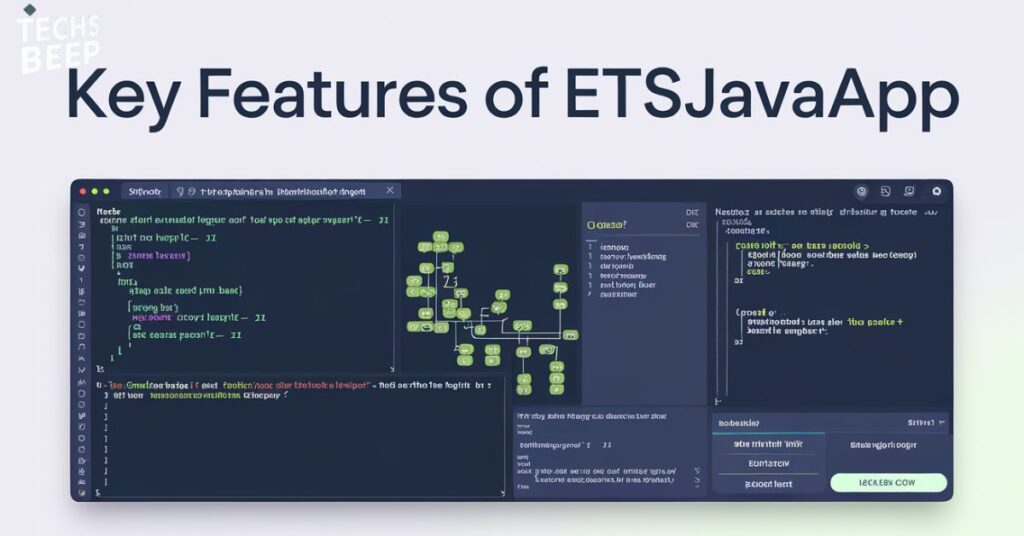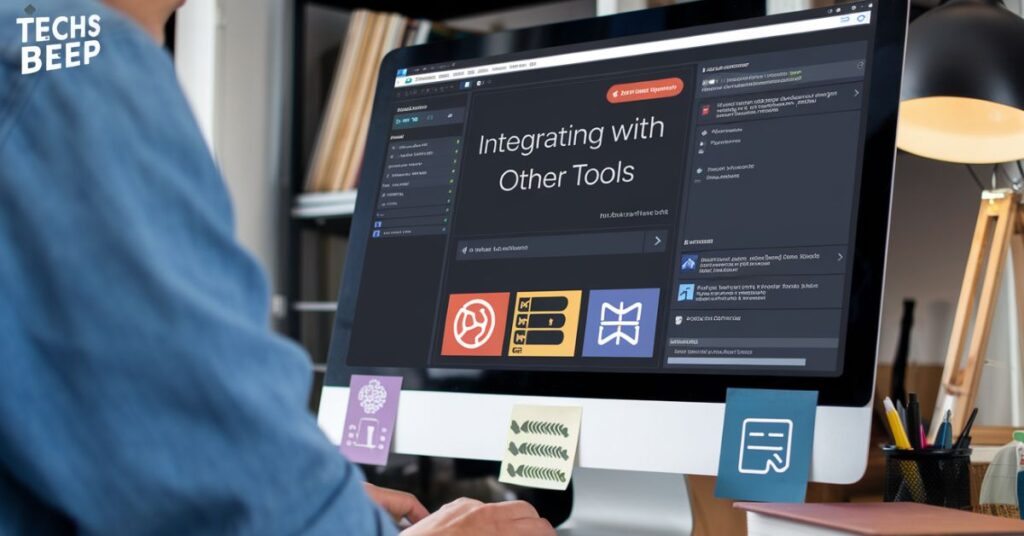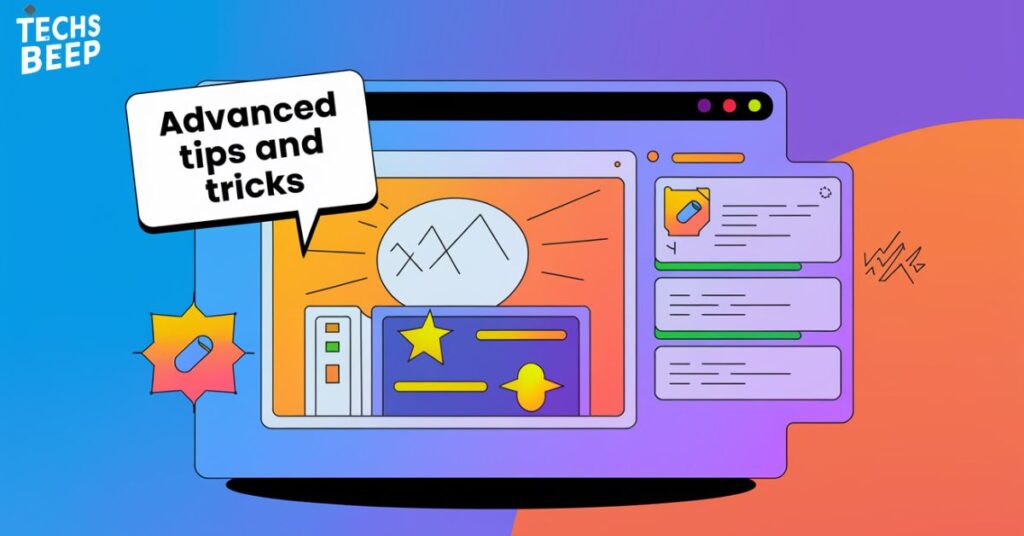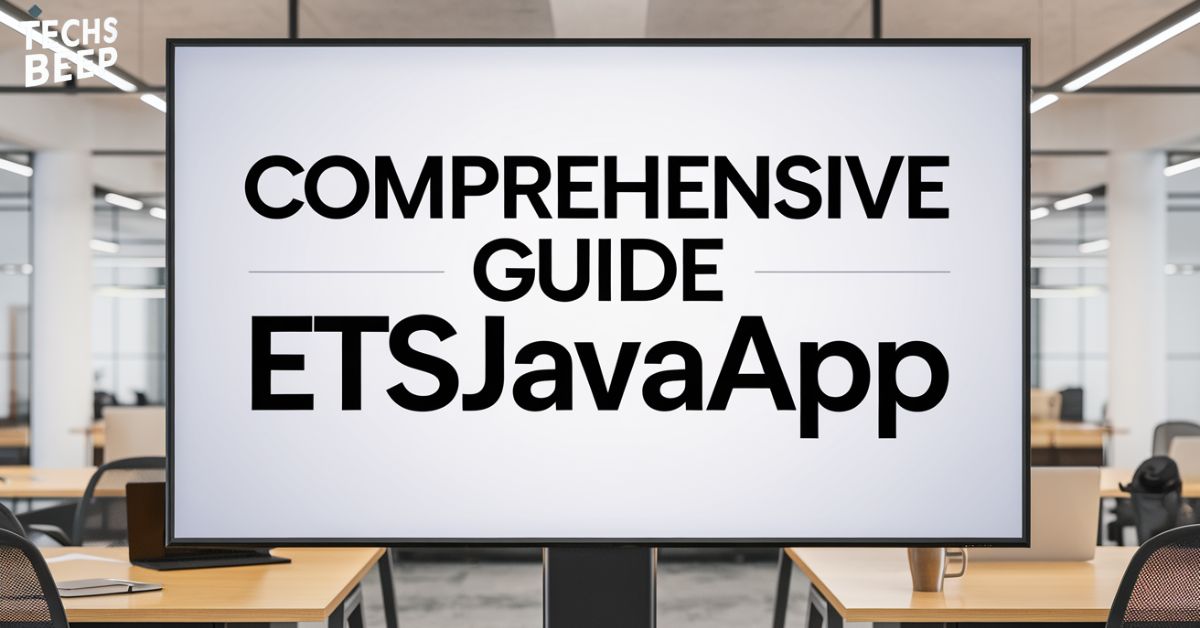ETSJavaApp is a cutting-edge tool designed to streamline Java development processes. It combines an intuitive interface with powerful features to enhance coding efficiency and productivity.
Are you tired of juggling multiple tools for your Java projects? ETSJavaApp might be the game-changer you’ve been searching for. This comprehensive guide will walk you through its features and benefits.
From beginners to seasoned developers, It offers something for everyone. Let’s dive in and explore how this innovative application can revolutionize your Java development workflow.
What is ETSJavaApp?
It is an all-in-one Java development environment that simplifies coding, debugging, and execution. It’s designed to cater to developers of all skill levels, from novices to experts.
Key benefits of ETSJavaApp include:
- Streamlined coding process
- Integrated debugging tools
- Real-time code analysis
- Customizable interface
With its user-friendly design, it aims to reduce the learning curve associated with Java development. It provides a centralized platform for all your Java-related tasks.
Key Features of ETSJavaApp

It boasts a wide array of features that set it apart from traditional Java IDEs.
Prepare to be amazed by ETSJavaApp’s standout offerings:
- Intelligent Code Completion: Suggests code snippets and completes syntax as you type.
- Error Detection: Highlights errors in real-time, helping you catch bugs early.
- Integrated Debugger: Allows step-by-step code execution and variable inspection.
- Version Control Integration: Seamlessly works with Git and other version control systems.
- Performance Profiler: Helps identify bottlenecks and optimize code performance.
| Feature | Description |
| Code Completion | Auto-suggests code based on context |
| Error Detection | Real-time error highlighting |
| Debugger | Step-through debugging with variable inspection |
| Version Control | Git and SVN integration |
| Profiler | Code performance analysis tools |
These features work in harmony to create a robust development environment. Its holistic approach to Java development sets it apart from other tools in the market.
Getting Started with ETSJavaApp
Starting your journey with ETSJavaApp is straightforward.
Follow these steps to get up and running:
- Download: Visit the official ETSJavaApp website and download the installer.
- Install: Run the installer and follow the on-screen instructions.
- Launch: Open ETSJavaApp and create a new project or import an existing one.
“The best way to predict the future is to create it.” – Alan Kay
This quote encapsulates the spirit of ETSJavaApp – empowering developers to create efficiently. Once installed, you’ll be greeted with a clean, intuitive interface ready for your Java projects.
How to Compile and Run Code?
Compiling and running code in ETSJavaApp is a breeze. The process is streamlined to enhance productivity and reduce errors.
To compile your code:
- Open your Java file in the editor.
- Click the “Compile” button or use the shortcut (usually Ctrl+F9).
Running your compiled code is equally simple:
- Ensure your code is compiled without errors.
- Click the “Run” button or use the shortcut (usually Shift+F10).
It provides clear feedback on compilation and execution, making it easy to identify and fix issues. This streamlined process allows developers to focus on writing code rather than wrestling with complex build systems.
Debugging with ETSJavaApp

Debugging is a crucial part of development, and ETSJavaApp excels in this area. Its integrated debugger offers powerful tools to track down and fix bugs efficiently.
Key debugging features include:
- Breakpoints: Set points where code execution pauses.
- Step-through debugging: Execute code line by line.
- Variable inspection: Examine variable values during execution.
- Watch expressions: Monitor specific expressions as code runs.
To start debugging:
- Set breakpoints by clicking on the left margin of your code.
- Click the “Debug” button or use the shortcut (usually Shift+F9).
- Use the debug controls to step through your code.
Its debugger interface is intuitive, making it easy to navigate complex code structures. It provides valuable insights into your code’s behavior, helping you squash bugs faster.
Real-Time Code Analysis
One of its standout features is its real-time code analysis. This powerful tool continuously scans your code as you type, providing instant feedback.
Benefits of real-time analysis include:
- Immediate error detection
- Code quality suggestions
- Performance optimization tips
- Security vulnerability alerts
The analysis engine uses advanced algorithms to provide context-aware suggestions. It not only catches syntax errors but also suggests best practices and potential optimizations.
“The sooner you catch a bug, the cheaper it is to fix it.” – Steve McConnell
This feature embodies the principle of early error detection, saving developers countless hours of debugging and refactoring. It’s like having a senior developer looking over your shoulder, offering advice in real-time.
Customizing the Interface
This platform understands that every developer has unique preferences. Its highly customizable interface allows you to tailor the environment to your liking.
Customization options include:
- Theme selection: Choose from light, dark, and custom color schemes.
- Layout arrangement: Drag and drop panels to your preferred positions.
- Font settings: Adjust font size and style for better readability.
- Shortcut customization: Create custom keyboard shortcuts for frequent actions.
To customize your interface:
- Go to “Settings” or “Preferences” in the main menu.
- Navigate through the various customization options.
- Apply changes and restart ETSJavaApp if necessary.
By personalizing your workspace, you can create an environment that maximizes your productivity. The platform’s flexibility ensures that it adapts to your workflow, not the other way around.
Integrating with Other Tools

It doesn’t exist in isolation. It’s designed to integrate seamlessly with a variety of other development tools and services.
Popular integrations include:
- Version Control Systems: Git, SVN, Mercurial
- Build Tools: Maven, Gradle, Ant
- Testing Frameworks: JUnit, TestNG
- Continuous Integration: Jenkins, Travis CI
To set up integrations:
- Navigate to the “Integrations” or “Plugins” section in settings.
- Select the tools you want to integrate.
- Follow the setup wizard for each integration.
These integrations create a cohesive development environment, allowing you to manage your entire workflow from within ETSJavaApp. This unified approach can significantly boost productivity and streamline your development process.
Read this article: Exploring the Uiisii TWS-P01 Wireless Earbuds
Best Practices for Using ETSJavaApp
To get the most out of it, consider adopting these best practices:
- Regular Updates: Keep ETSJavaApp and its plugins up to date for the latest features and bug fixes.
- Keyboard Shortcuts: Learn and use keyboard shortcuts to speed up common tasks.
- Code Templates: Create and use code templates for frequently used patterns.
- Version Control: Commit often and use branching strategies for better code management.
- Continuous Learning: Explore ETSJavaApp’s documentation and community resources regularly.
| Practice | Benefit |
| Regular Updates | Access to latest features and improvements |
| Keyboard Shortcuts | Increased coding speed and efficiency |
| Code Templates | Consistency and time-saving in code writing |
| Version Control | Better code management and collaboration |
| Continuous Learning | Ongoing skill improvement and feature discovery |
By incorporating these practices into your workflow, you can maximize the benefits of ETSJavaApp. Remember, the tool is powerful, but it’s your usage that truly unlocks its potential.
Troubleshooting Common Issues
Even the best tools can encounter issues.
Navigate ETSJavaApp’s challenges with these troubleshooting tips:
- Slow Performance:
- Clear cache and restart ETSJavaApp
- Check for resource-intensive plugins and disable if necessary
- Compilation Errors:
- Verify Java SDK configuration in ETSJavaApp settings
- Ensure all required libraries are properly linked
- Integration Issues:
- Check integration settings and re-configure if needed
- Update both ETSJavaApp and the integrated tool to compatible versions
- UI Glitches:
- Try resetting the UI to default settings
- Update graphics drivers if issues persist
If problems persist, consult the ETSJavaApp documentation or community forums. The vibrant user community often provides quick solutions to common issues.
Advanced Tips and Tricks

For those looking to take their ETSJavaApp skills to the next level, here are some advanced tips:
- Custom Plugin Development: Create plugins to extend ETSJavaApp’s functionality.
- Macros: Record and play back complex sequences of actions.
- Remote Development: Use ETSJavaApp’s remote development features for cloud-based coding.
- Performance Tuning: Adjust memory settings and JVM options for optimal performance.
- Advanced Debugging: Utilize memory snapshots and thread dumps for complex issues.
“The only way to do great work is to love what you do.” – Steve Jobs
These advanced features can significantly enhance your development experience. They transform this platform from a mere IDE into a powerful, customized development environment tailored to your specific needs.
Final Words
ETSJavaApp stands out as a versatile and powerful tool in the Java development landscape. Its combination of intuitive design and advanced features caters to developers of all skill levels.
By leveraging ETSJavaApp’s capabilities, developers can streamline their workflow, catch errors early, and produce higher quality code. The tool’s integration capabilities and customization options make it adaptable to various development styles and project requirements.
As Java continues to evolve, it remains at the forefront, consistently updating to support the latest language features and development practices. Whether you’re a solo developer or part of a large team, ETSJavaApp has the potential to significantly enhance your Java development experience.
Frequently Asked Questions
What operating systems does ETSJavaApp support?
It supports Windows, macOS, and Linux operating systems.
Can I use ETSJavaApp for projects in other languages?
While primarily for Java, it offers limited support for related JVM languages.
How do I update ETSJavaApp?
Use the built-in update feature or download the latest version from the official website.
Is there a community or support forum for ETSJavaApp users?
Yes, the platform has an active community forum and official support channels.
Can I customize the interface of ETSJavaApp?
Absolutely, it offers extensive interface customization options.








